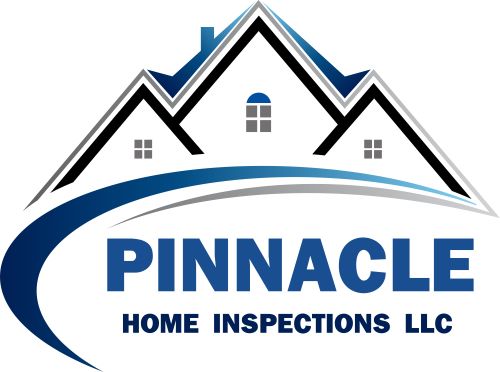Understanding Infrared Thermography in Home Inspections
Imagine walking into what seems like the perfect home. The walls look fresh, the appliances shine,
and the air feels just right. But what if lurking behind those walls are hidden issues such as
moisture intrusion, faulty wiring, or cooling loss?
These problems are not usually visible to the naked eye and can lead to expensive repairs down the road. This is where infrared thermography becomes an invaluable tool in
a comprehensive home inspection.
Infrared thermography is a technology that allows your inspector to look beyond what you can see,
identifying potential concerns in a way that standard visual inspections simply can’t. Let’s
explore how this process works, what it reveals, and when you should request it for your peace of
mind.
What Is Infrared Thermography?
Infrared thermography (sometimes called thermal imaging) is a non-invasive diagnostic method that
uses a specialized camera to detect temperature differences across surfaces in your home. Every
object emits infrared energy, and the camera translates these temperature readings into a
color-coded image called a thermogram. By interpreting these images, a trained inspector gains
critical information about what’s happening behind walls, under floors, or above ceilings.
Why is this important?
Many problems begin long before they leave visible traces. With thermal imaging, issues like missing insulation or small leaks are often detected before they cause major
damage or escalate into costly repairs.
What Hidden Issues Can Infrared Scanning Reveal?
Homes are complex systems, and many problems stay hidden until they become emergencies. Typical visual inspections can only reveal so much. Infrared thermography steps in as a powerful ally for both buyers and homeowners.
Here are common issues often uncovered with this technology:
Moisture Intrusion and Water Leaks: Infrared cameras reveal cold or damp spots in walls, ceilings, or floors that may indicate plumbing leaks, roof failures, or basement seepage—even before you spot a stain or smell mildew.
Missing or Damaged Insulation: Gaps in wall or attic insulation appear as color differences on the thermal image, pointing toward areas with heat loss or infiltration, which can increase utility bills and reduce comfort.
Electrical Hot Spots: Overheating outlets, wiring, or breaker panels stand out clearly as warm spots in thermographic scans. Catching these early can prevent fire hazards.
HVAC System Deficiencies: Trouble with heating and cooling ducts or equipment, such as blocked vents or leaky ducts, can be detected by variations in surface temperature.
Air Leaks: Drafty window frames or unsealed doors show up as cold patches, often escaping notice during a regular walk-through.
Examples of Issues Infrared Thermography Frequently Identifies
Plumbing leaks hidden inside walls Dampness behind bathroom tiles, Poorly insulated attic sections. Hot breakers or overloaded circuits in electrical panels, Cold air entering through foundation
cracks. Spotting these problems early allows you to address them before they worsen or create safety hazards.
Should You Ask for Infrared Thermography When Buying a Home?
Relying solely on traditional visual inspections is a bit like judging a book by its cover. While a well-trained eye can uncover many concerns, some issues remain invisible until they reach the
surface. Infrared thermography adds an extra layer of assurance, especially if you’re:
Buying an older home, which may have outdated wiring, insulation problems, or hidden water
intrusions Concerned about previous repairs or renovations that may not have been done properly
Interested in improving the home’s energy efficiency and comfort Wanting to avoid surprise repairs
shortly after moving in.
In Middle Tennessee, where weather patterns can create humidity or insulation challenges, thermography is an especially wise addition to your inspection. It’s also a valuable tool if you
notice unexplained utility spikes, damp odors, or uneven temperatures during your initial walk-through.
For added peace of mind, ask your inspector whether they offer thermal imaging as part of the home inspection process. Not every company includes this advanced service by default. Choosing a team skilled in both standard and infrared inspections means you get the clearest possible picture of your investment.
How Infrared Thermography Adds Value
Thermal imaging isn’t just about finding problems; it’s about giving you confidence in your purchase or sale.
Benefits include:
Non-invasive Assessment: No holes, no damage—just fast, real-time results.
Early Detection: Spot small problems before they escalate, potentially saving thousands on future repairs.
Detailed Reports: High-resolution photos included in your inspection report make it easy to understand and plan next steps. Energy Efficiency: Identifies ways to make your home more
comfortable and cost-effective.
These added insights empower you to negotiate repairs, plan upgrades, or simply enjoy peace of
mind.
When to Request Infrared Scanning
While every home can benefit, the following situations make thermal imaging especially useful:
You are concerned about past water issues or suspect leaks
The home is older or has been renovated
Unexplained odors, stains, or temperature differences are present
You want a comprehensive evaluation before listing, selling, or buying.
Final Thoughts:
Investing in Peace of Mind
Infrared thermography is a smart, forward-thinking addition to any inspection on home purchases. By
revealing what hides behind walls and under floors, you gain the foresight to address problems
early and protect your investment. If you want the most complete picture of your home’s condition, consider adding thermal
imaging to your next inspection.
For those searching for a thorough and technology-driven approach, Pinnacle Home Inspections LLC
offers this advanced diagnostic tool as part of its commitment to your safety and satisfaction.
Investing in an inspection enhanced with infrared thermography today can save you from untold stress and expense
tomorrow.

.png)